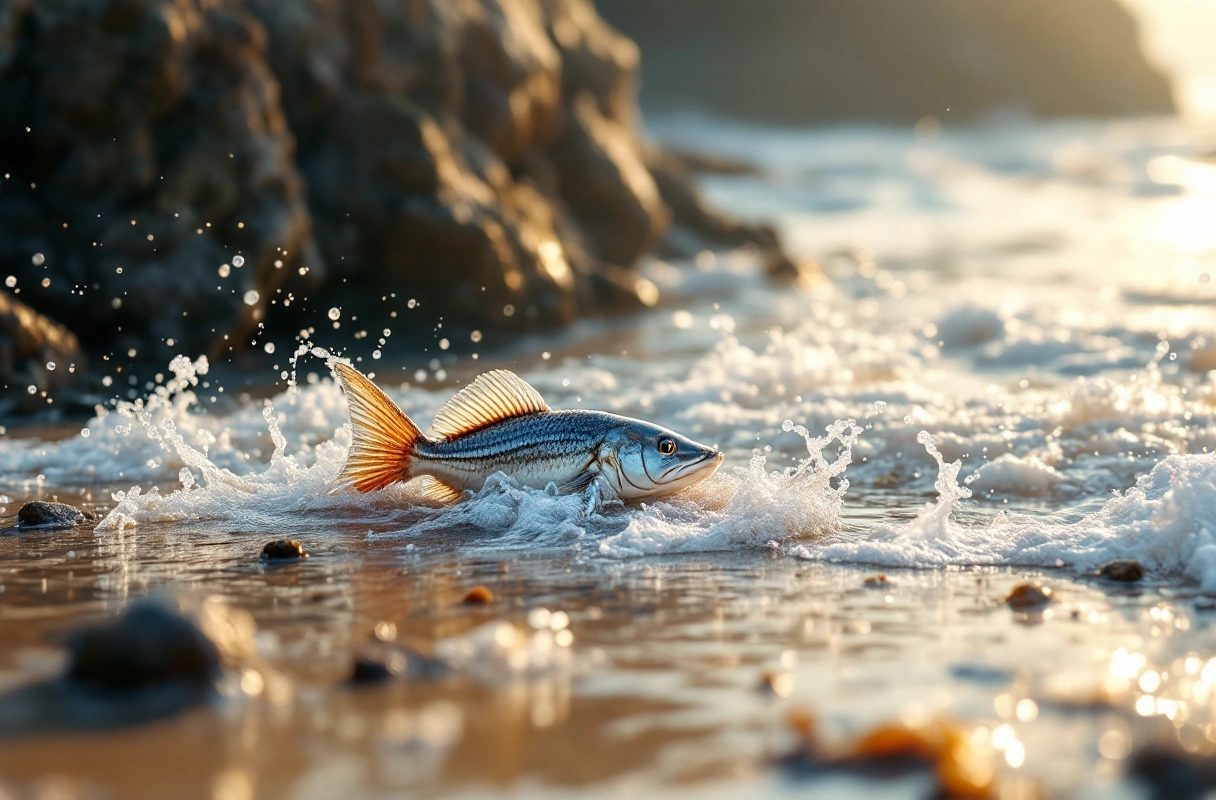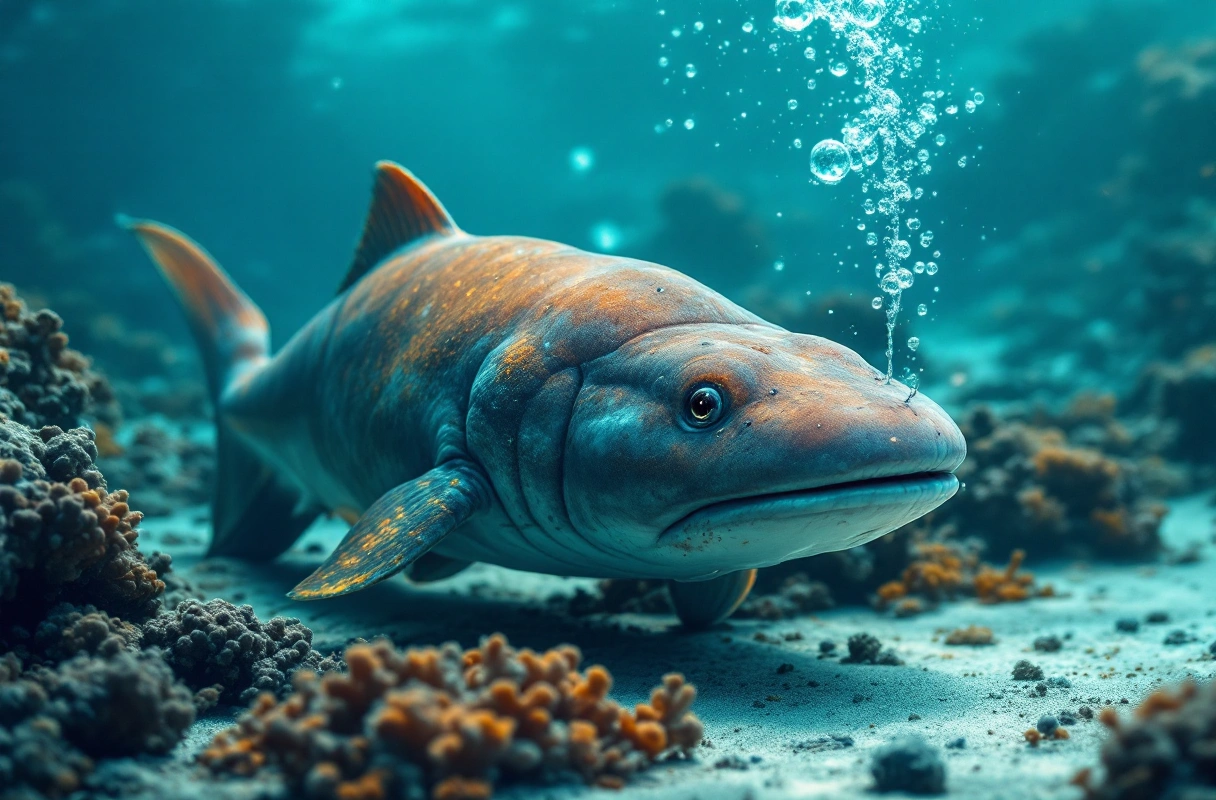How to Identify Rare Sea Creatures on Coastal Family Trips
Exploring coastal regions can be an exhilarating experience for families, especially when it comes to discovering the hidden treasures of the sea. Whether you are a seasoned marine biologist or a curious nature enthusiast, the thrill of spotting rare sea creatures can transform a simple beach outing into a memorable adventure. In this article, we will delve into effective strategies for identifying these fascinating marine animals while also examining how they adapt to their environment.
Understanding Sea Creatures and Their Habitats
To successfully identify rare sea creatures, it is vital to understand their habitats and behaviors. Coastal ecosystems are rich in biodiversity, home to numerous species that have adapted uniquely to their surroundings. These adaptations are critical for survival, allowing sea creatures to thrive in varying conditions, from rocky shorelines to sandy beaches.
The Diversity of Coastal Ecosystems
Coastal ecosystems encompass a variety of environments, including tidal pools, coral reefs, and kelp forests. Each of these habitats supports different types of sea creatures. For example, tidal pools often host organisms such as sea anemones, starfish, and crabs, while coral reefs are teeming with colorful fish and other marine life.
- Tidal Pools: Shallow, rocky areas that are filled with seawater during high tide but left exposed at low tide. They are often home to sea stars, sea urchins, and various mollusks.
- Coral Reefs: Complex underwater structures formed by coral polyps. These vibrant ecosystems are rich in biodiversity, providing shelter to countless species, including clownfish and parrotfish.
- Kelp Forests: Underwater forests formed by large kelp plants, providing habitat for species such as sea otters, sea lions, and various fish.
Understanding the specific characteristics of these habitats will enhance your ability to spot and identify rare sea creatures during your coastal adventures.
Common Misconceptions About Sea Creatures
Many people harbor misconceptions about sea creatures, which can lead to missed opportunities for discovery. Here are a few common myths to dispel:
- All Sea Creatures Are Fish: While fish are a significant part of marine ecosystems, sea creatures also include mammals (like dolphins and whales), reptiles (such as sea turtles), and invertebrates (including jellyfish and octopuses).
- Rare Sea Creatures Are Always Deep Underwater: Many rare species can be found in shallow waters or tidal pools, particularly during specific seasons when they come closer to shore to breed or feed.
- You Need Special Equipment to Identify Sea Creatures: While tools like underwater cameras can enhance your experience, keen observation and a good field guide are often all you need to identify various species.
How to Prepare for Your Coastal Adventure
Preparation is key when embarking on a trip to identify rare sea creatures. With proper planning, families can maximize their chances of making exciting discoveries.
Essential Gear for Identification
Packing the right gear can significantly enhance your ability to spot and identify marine life. Consider bringing the following items:
- Field Guides: A reliable field guide specific to your coastal region can help you identify sea creatures based on their appearance, habitat, and behavior.
- Binoculars: Useful for spotting distant animals, such as seabirds or marine mammals, without disturbing them.
- Waterproof Camera: Capturing images of rare creatures can be a fantastic way to document your findings and share your experiences.
Timing Your Visit
The timing of your trip can greatly impact the variety of sea creatures you encounter. Certain times of the day and year are more conducive to spotting rare species.
- Tide Timing: Low tides reveal tidal pools, making it easier to observe creatures like crabs and anemones. Check tide schedules to plan your visit accordingly.
- Seasonal Patterns: Many sea creatures have specific breeding seasons or migration patterns. Researching these can help you identify the best times to visit for spotting certain species.
Identifying Rare Sea Creatures
Once you are on-site, the real adventure begins. Identifying rare sea creatures requires patience, keen observation, and a willingness to learn about their behaviors and habitats.
Observing Behavior and Habitat
When you spot a sea creature, take a moment to observe its behavior and environment. Understanding how an animal interacts with its surroundings can provide valuable clues for identification.
- Movement Patterns: Many sea creatures have distinctive movement patterns. For example, octopuses may move by jet propulsion, while sea turtles glide gracefully through the water.
- Feeding Habits: Observing what and how a creature eats can also aid in identification. For instance, filter feeders like clams and oysters can often be found in sandy or muddy substrates.
Taking Notes and Documenting Findings
Documenting your observations can enrich your understanding and help you identify species later. Consider keeping a nature journal to record the following:
- Date and time of your observation
- Location and habitat type
- Description of the sea creature, including size, color, and unique features
- Any notable behaviors observed
Utilizing Technology for Identification
In today's digital age, technology can be a valuable tool for identifying sea creatures. Several apps and online resources can assist in the identification process.
- Field Identification Apps: There are numerous mobile applications designed for marine life identification. These apps often include images, descriptions, and even audio clips of various species.
- Online Communities: Engaging with online forums and social media groups focused on marine biology can provide support and insights from fellow enthusiasts.
How Sea Creatures Adapt to Their Environment
Understanding the adaptations of sea creatures is crucial for appreciating their diversity and resilience. These adaptations can be classified into various categories.
Physical Adaptations
Physical adaptations are structural features that enhance a creature's survival in its environment. Examples include:
- Camouflage: Many sea creatures possess coloration or patterns that allow them to blend into their surroundings, providing protection from predators. For instance, the octopus can change its skin color and texture to match the ocean floor.
- Body Shape and Size: Some creatures have evolved unique body shapes to navigate their specific habitats. For example, flatfish are adapted to lie on the ocean floor, while jellyfish have a bell shape that allows them to drift with currents.
Behavioral Adaptations
Behavioral adaptations involve changes in how a creature interacts with its environment. These can include:
- Migration: Many species, such as whales and sea turtles, migrate to find food or breeding grounds, demonstrating their ability to adapt to seasonal changes in their environment.
- Social Behavior: Some sea creatures, like dolphins, exhibit complex social structures that enhance their ability to hunt and protect each other from predators.
Engaging Kids in Marine Exploration
Family trips to the coast are not just about observation; they are also about fostering a love for marine biology in children. Engaging kids in the process can lead to a deeper appreciation for sea creatures and their habitats.
Fun Activities for Young Explorers
Consider incorporating interactive activities into your coastal adventure to keep kids engaged:
- Scavenger Hunts: Create a scavenger hunt list of specific sea creatures or shells for kids to find. This encourages exploration and observation skills.
- Creative Arts: Bring along art supplies for children to draw or paint their favorite sea creatures. This can serve as a wonderful keepsake from the trip.
Educational Resources
Utilizing educational resources can enhance children's understanding of marine life:
- Books and Documentaries: Prior to your trip, watch documentaries or read books about marine life to spark interest and curiosity.
- Local Workshops: Check if any local marine centers offer workshops or guided tours that focus on marine biology and conservation.
Discovering the Wonders of Marine Life Together
Exploring coastal regions and identifying rare sea creatures can become a cherished family tradition. The process of discovery fosters a sense of wonder and curiosity about the natural world.
The Role of Conservation
As you embark on your coastal adventures, it is essential to instill a sense of responsibility for the environment. Teaching children about marine conservation and the importance of protecting sea creatures and their habitats can shape their understanding and actions for the future.
- Leave No Trace: Encourage your family to leave the environment as they found it. This includes not disturbing wildlife and cleaning up any litter.
- Participate in Local Conservation Efforts: Engaging in beach clean-ups or supporting marine conservation organizations can deepen your family's commitment to preserving marine ecosystems.
The Intersection of Marine Exploration and Community Engagement
As you dive into the world of sea creatures during your coastal trips, consider the broader impact of your explorations. Engaging with organizations like Banana Slug Club can provide additional resources and support for your learning journey.
At Banana Slug Club, we are dedicated to fostering a love for nature, science, and exploration among students, families, and nature enthusiasts. Through our programs and resources, we aim to equip you with the knowledge and tools necessary to deepen your understanding of marine biology and the fascinating world of sea creatures.
Whether you're a seasoned explorer or a curious beginner, our community is here to support your journey. We invite you to visit our website for more information on upcoming events, workshops, and educational materials that can enhance your family's adventures. Together, let's continue to inspire a love for the ocean and its remarkable inhabitants.



